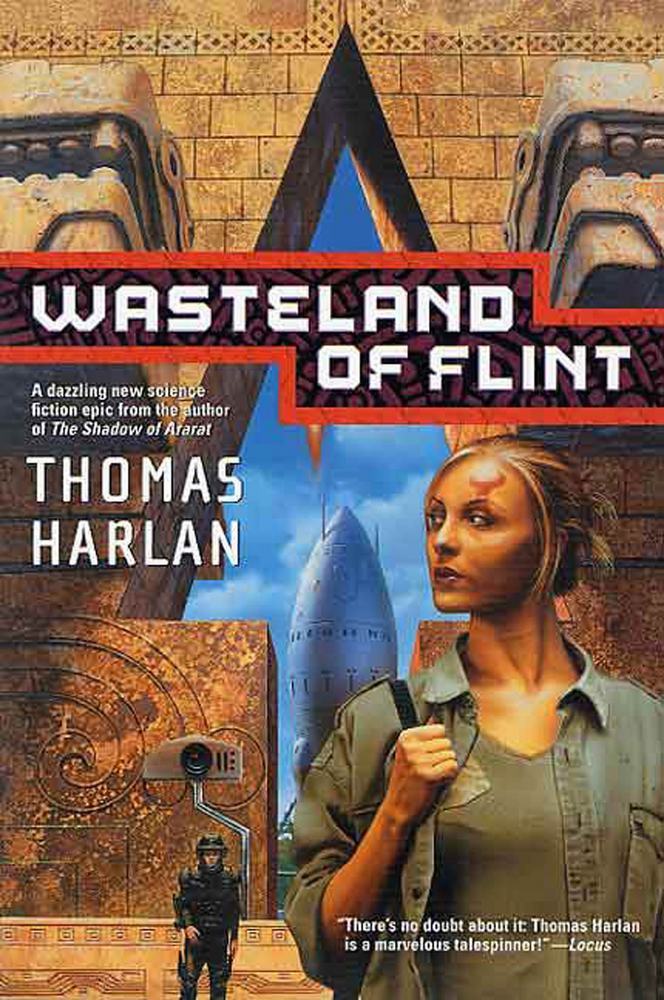Wasteland of Flint
 After way too long, I’ve finally gotten to Thomas Harlan’s Time of the Sixth Sun series.
After way too long, I’ve finally gotten to Thomas Harlan’s Time of the Sixth Sun series.
It is well written and therefore easy to get into. It’s also potentially very hard to get into.
At one level, this is general SF: humanity has invented FTL, and is slowly exploring the galaxy (or at least nearby parts of it), we’ve met some alien species, and there’s a number of colonies out there.
However, this is alternate history, one where the Aztec Empire not only survived the Sixteenth Century, but eventually came out on top. The government isn’t really gone into, but is Aztec, with a lot of cultural synthesis going on in the centuries since. In fact, a lot of this is deliberately not gone into. There’s no big ‘as you already know’ speeches. This is the world we have, and you get to roll with it. (Apparently there was a wiki that went into this, but it seems down now; so just think of something in the future of The Gate of Worlds—which is a book that distracts itself too much with setting for the foundation of its alternate history.)
But, people are still people, so while the culture is somewhat alien, everything else is quite understandable. There is some mixing of tone/genre. The opening part has a lot of really good description of a broken world (literally) and an ultralight that’s used to travel across it, along with survival gear, and camp proceedures… it really sets up a nice, grounded, scene in an alien environment, and introduces the story very well. However, later, the novel has split into two major plotlines, and one of them features the kind of pea-soup asteroid belt you get in space opera… which while great entertainment, is very at odds with the harder SF feel of that start.
The bulk of the novel is classic science mystery, revolving around a planet that someone partially took apart in the distant past, and didn’t quite put together right (which does all sorts of things to the geology and atmosphere—I think the thoughts on local gravity are a bit off though). And that’s generally the best part of the book.
However, the alternate history timeline comes into play to give the book a separate feel from the normal. This isn’t necessarily something to puzzle over and pick apart until all the answers are revealed. The series title refers to the Aztec calendar, which plays upon ideas of cycles of civilizations, and in this universe, humans have found remnants of previous civilizations, which are referred to in accordance to this cosmology, and artifacts found here are referred to as coming from the First Sun. This is a somewhat inimical universe, where humans have been staying carefully away from anything that might attract too much attention. (Imagine going to the stars, and finding we’re in the middle of a game of AI War.)
Well, possibly. There’s a lack of a lot of hard evidence for much of anything here, and while there are parts of things still functioning, just what they would do, whether they would contact anything else, etc., is unknown. There is evidence of another civilization that did get the attention of something… and is no longer around, so perhaps caution is indeed the best policy.
The real shame is that this series seems to be the last thing Harlan got published. While there’s a few difficulties here, and it certainly doesn’t hold the reader’s hand, it is very good, and I’d like to have more to read from him past the next two books of this series.

Discussion ¬